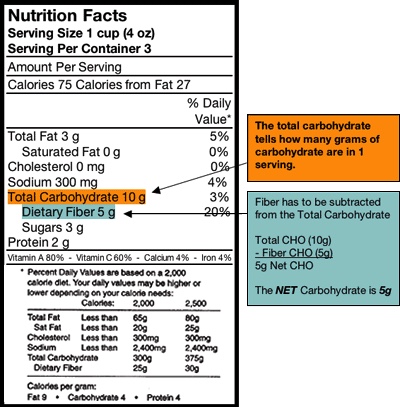WHAT IS FIBER?
Fiber is a substance that is found only in plants and can not be digested by human bodies. Fiber moves through the digestive system with food providing bulk, and taking up some harmful substances. It is important to eat an adequate amount of dietary fiber each day to help keep your heart and blood healthy, and keep your intestines moving regularly. Dietary fiber may also help in the management of other health conditions such as hemorrhoids, diabetes, diverticular disease, and cancer.
Fiber helps reduce your cholesterol level and for people with diabetes, may help to slow sugar absorption. Insoluble fiber helps to keep waste moving quickly through your body, possibly lessening your exposure to cancer-promoting substances. If you are dieting, fiber helps you to feel full on less food! Because high-fiber foods require more chewing time, you eat more slowly, allowing your body to register that it is full. Plant foods are naturally low in calories, so while you increase your fiber consumption, you decrease your calorie consumption. Although juice is considered a fruit, it doesn’t usually contain a lot of fiber. The juicing process tends to break down the fiber to form a smooth liquid.
Fiber can be described as soluble and insoluble.
-
SOLUBLE FIBER is found in oats, barley, peas, beans, apples, oranges and carrots, and psyllium, which is found in some cereal products. It forms a gel when mixed with liquid in your digestive tract. Soluble ber has been proven to lower blood cholesterol levels, which can reduce the risk of heart disease.
-
INSOLUBLE FIBER is a component of plant cell walls, and passes through your digestive tract without dissolving. It does hold onto water as it passes through, keeping waste moving along. Insoluble fiber helps to decrease the amount of time that potential toxins remain in the digestive tract, allowing less to be absorbed into our bodies.
It is recommended that adults eat 20-35 grams of fiber each day. This should be from both soluble and insoluble fiber.

Fiber is easily available if you eat a diet rich in fruits, vegetables, and whole grains.
HOW EASY IS IT?
-
Have a high-fiber breakfast. High-fiber breakfast cereals, with 5 or more grams of fiber per serving, are a good start. You can also add a little unprocessed wheat bran to your favorite cereal.
-
Switch to whole grain breads. Look for whole wheat, whole wheat our, or another whole grain as the first ingredient on the label. Whole grain bread should have at least 3 grams of fiber per serving.
-
Eat more whole grains and whole grain products. Brown rice, barley, bulgur, and whole wheat pasta are tasty alternatives to their more refined forms.
-
Add vegetables to sauces and casseroles. Add them to omelets and pasta dishes.
-
Eat more dried beans and peas. They add so much fiber to your diet, and they’re inexpensive too!
-
Eat fruit at every meal and in between. Apples, pears, and oranges are packed with fiber, both soluble and insoluble. Wash them well before eating and eat the skin too.
-
Snack on fruits and vegetables. Low- fat, low-salt popcorn is another good source of fiber.
Fiber supplements are available but whole foods are generally best if your body can tolerate them. Some people have health problems that prevent them from eating many fresh fruits and vegetables. For these people a supplemental fiber may be recommended by their medical care provider.
Fiber information can be found in many nutrition books and on the internet.
Try the American Dietetic Association’s website at: www.eatright.org for more information.